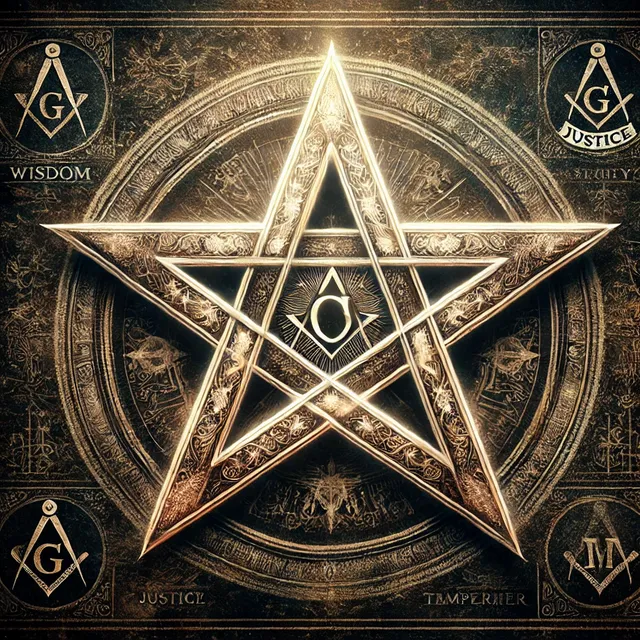
The Masonic Star, often referred to as the Pentagram or "Star of David," is one of the most recognized and enigmatic symbols in human history. While various ancient cultures have used the five-pointed star as a symbol, its association with Freemasonry has made it a subject of much speculation, interpretation, and legend.
Freemasonry: An Ancient and Mysterious Organization
Freemasonry, a secretive organization that rose to prominence in the Middle Ages, has long intrigued and fascinated scholars, historians, and the general public. Built upon philosophical and moral values, Freemasonry's primary goal was the betterment of the individual and the advancement of society through knowledge and the pursuit of truth. Symbols play a central role in Masonic beliefs, with each symbol conveying deep philosophical and spiritual meaning.
The Pentagram: A Masonic Symbol
The five-pointed star, known as the Pentagram, is one of the most significant symbols associated with Freemasonry. Some believe the star represents the harmony between spiritual and material forces, symbolizing balance in the key elements of life. It is also said to depict the "perfect human," with each point representing a part of the human form: the head, arms, and legs.
In the Masonic context, the Pentagram is said to reflect core principles of Freemasonry: wisdom, strength, beauty, justice, and temperance. These virtues are central to the Masonic philosophy and are considered essential to living a moral and fulfilling life.
Historical and Religious Origins
While the Pentagram is strongly associated with modern Freemasonry, its origins stretch back to ancient civilizations. The star appeared in ancient Babylonian and Egyptian cultures as a symbol of celestial power. In ancient Greek philosophy, the Pentagram was embraced by Pythagoras as a representation of mathematical harmony and beauty.
Additionally, various religious traditions used the Pentagram as a symbol for spiritual and mystical purposes. In Christianity, the five-pointed star represented the five sacred wounds of Christ. In Jewish tradition, the "Star of David" (a different yet related symbol) has long been a representation of divine protection and power.
Controversy and Modern Interpretations
Over time, the Pentagram became the subject of controversy and speculation. During the Middle Ages, it was associated with magic and occult rituals, giving it a sometimes sinister or supernatural reputation. In popular culture and films, the Pentagram is often portrayed as a symbol of magical powers or secret societies, further adding to its air of mystery.
Today, the Pentagram remains a symbol tied to the modern conspiracy theories surrounding Freemasonry. While Freemasons maintain that their symbols, including the Pentagram, represent only philosophical and spiritual ideals, the symbol continues to stir curiosity and debate regarding the organization's influence in world affairs.
Conclusion
The Masonic Star is more than just a symbol—it embodies a long, complex history that spans civilizations and cultures. From its use in ancient spiritual practices to its place in Masonic tradition as a representation of wisdom and balance, the Pentagram continues to intrigue and inspire both believers and skeptics. It remains a powerful icon in the human quest for meaning and understanding.